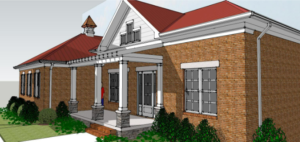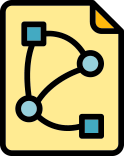
Perspective
This unit is designed to prove the difference between what we think we see and what actually exists in the physical world. Students will use geometric terms and concepts to prove the existence of parallel lines where our brains visualize lines moving together in the distance.
Linear perspective is a mathematical system for creating the illusion of space and distance on a flat surface. This system originated in Florence, Italy in the early 1400’s. The artist and architect Brunelleschi demonstrated its principles, but another architect and writer, Leon Battista Alberti was first to write down rules of linear perspective for artists to follow.
Students will also investigate how to define space within a picture plane, through a variety of methods: identification of foreground, middle ground, and background, spatial illusion, use of diagonals, overlapping, and atmospheric perspective.
Trajectory

Acknowledged
Throughlines
Standards

Social Justice






